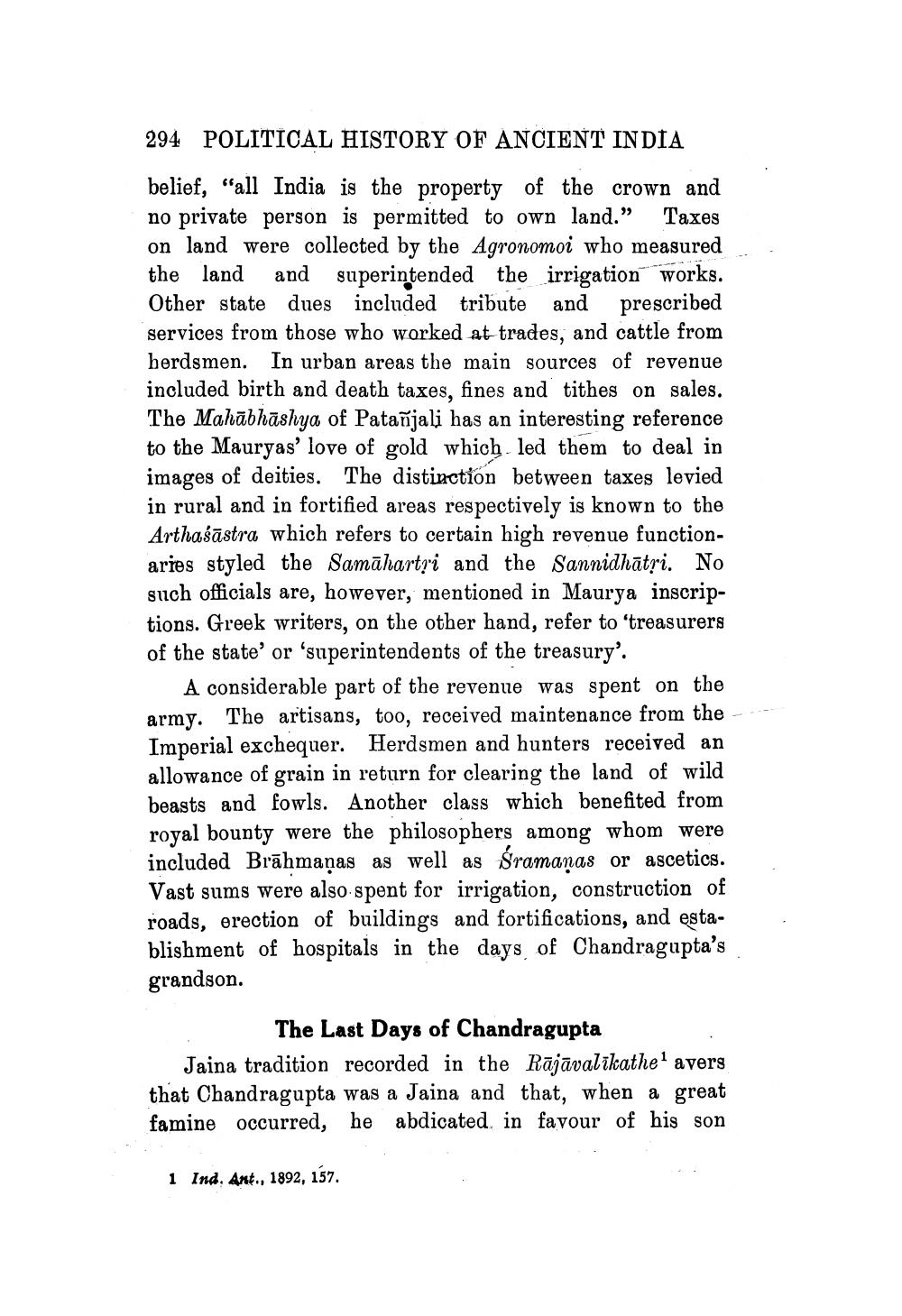________________
294 POLITICAL HISTORY OF ANCIENT INDIA
belief, "all India is the property of the crown and no private person is permitted to own land." Taxes on land were collected by the Agronomoi who measured the land and superintended the irrigation works. Other state dues included tribute and prescribed services from those who worked at trades, and cattle from herdsmen. In urban areas the main sources of revenue included birth and death taxes, fines and tithes on sales. The Mahabhashya of Patanjali has an interesting reference to the Mauryas' love of gold which led them to deal in images of deities. The distinction between taxes levied in rural and in fortified areas respectively is known to the Arthasastra which refers to certain high revenue functionaries styled the Samahartri and the Sannidhātri. No such officials are, however, mentioned in Maurya inscriptions. Greek writers, on the other hand, refer to 'treasurers of the state' or 'superintendents of the treasury'.
army.
A considerable part of the revenue was spent on the The artisans, too, received maintenance from the Imperial exchequer. Herdsmen and hunters received an allowance of grain in return for clearing the land of wild beasts and fowls. Another class which benefited from royal bounty were the philosophers among whom were included Brahmanas as well as Śramanas or ascetics. Vast sums were also spent for irrigation, construction of roads, erection of buildings and fortifications, and establishment of hospitals in the days of Chandragupta's grandson.
The Last Days of Chandragupta
Jaina tradition recorded in the Rajavalikathe1 avers that Chandragupta was a Jaina and that, when a great famine occurred, he abdicated in favour of his son
1 Ind. Ant., 1892, 157.




